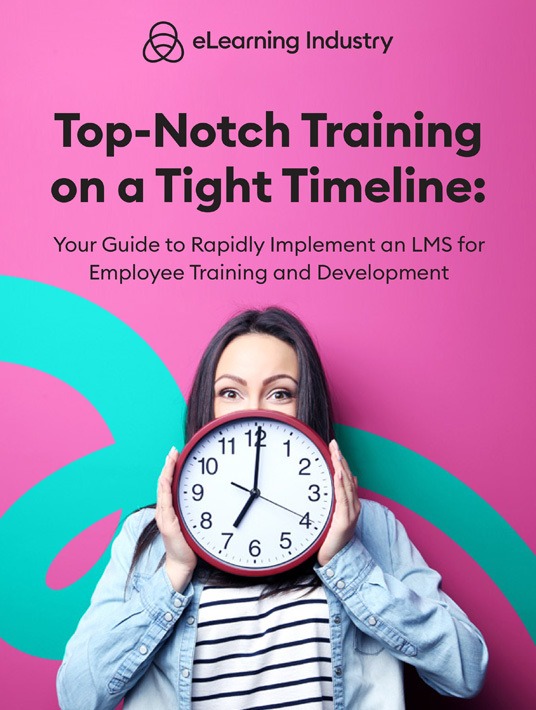8 Features You Should Incorporate Into Your Employee Training Software
What’s your priority as you train your staff? Is it profit, work-life balance, or job satisfaction? These are all forms of ROI, though we usually focus on the monetary benefit. We want to know how many cents were earned for each one we spent. Well, employee retention raises profits and saves the time and money used to hire and acclimatize replacements. What functions do you need to get maximum (positive) results from your training platform? Here are 8 ROI-driven features that your new employee training software must include.

1. Customizable Reporting
LMS with automated reporting allows mentors and instructors to quickly generate metrics and gain insights that can be used to improve the training process. They can also help trainees assess their own progress. For example, their most recent simulation scores or certification progress is pinned to the top of their dashboard, serving as a friendly reminder of how they’re faring and weak points that need to be addressed. Another perk of customizable reporting is tracking KPIs that measure employee development over the course of time, such as how efficiently they’re bridging skills gaps or if assessment scores are going up.
2. Personalized Paths
An intern or new hire may have an idea of where they’d like their career to go. Based on their job title, skillset, and gaps within the company, HR may have other ideas. These career paths, as designed by management, could complement, supplement, or completely cancel out trainee decisions. LMS that makes it easy to personalize training paths is therefore essential. Rather than the trainer (or trainee) deciding unilaterally, they can combine their visions for a better whole.
3. Brand Integration
Even with canned software, organizations want their training to have a special touch. This means you want software with a level of customization (e.g., uploading brand colors, logos, icons, and mascots). The ability to tailor the software to match your departments and organizational quirks is helpful too. And you’ll require the capacity to incorporate your training platform and link it to other software you might be using. You want it connected to HR/admin for oversight.
4. Social Learning
Beyond compatibility, it can be useful to link your training software with social media. This includes your corporate digital assets (i.e. your brand social media accounts) and individual users. The reason being we check our “socials” more often than we check our “officials.” So, when L&D wants to broadcast a training memo, they’ll get a more immediate response on social media than email. Other social features include chat rooms and intranet messaging platforms.
5. Gamification
Not everybody is into gamer metrics, but a lot of us are. It’s not just badges and icons and leaderboards. It can also include ambient sound effects (buzzers, alarms, and non-audio cues like flashing lights and starbursts). They make training more entertaining and exciting. Heightened emotional response deepens memory, helping you retain more of what you learn. You should also be able to customize gamification rewards. Like modifying the look of your badges to align with personal interests. Lastly, verify that employees can share rewards to social media to gain recognition and make coworkers jealous (so they’re more motivated to participate).
6. Portability
Smart companies train their new hires before they even arrive at work. It eases their learning curve and helps them settle in faster. However, this requires their onboarding app to be accessible off-site, ideally as a mobile app. It could work on laptops or tablets too, though smartphones are more useful. (The other two can only be issued once they report to their new job.) Ensure your training platform is smartphone-friendly and can be accessed offline. The latter is helpful for new employees who don’t have Wi-Fi at home.
7. Certification Support
Think of certifications as more structured personalized paths. The only exception being that they usually involve pre-set parameters that everyone must follow. For instance, every member of your sales staff needs to meet the same requirements to achieve their certificate, which means that individuals are held accountable for their actions (or lack thereof). Your employee training and development software should include advanced certification management features. Like tracking compliance certifications to avoid costly fees and keep employees safe on the job.
8. Built-In Authoring
Not everyone agrees on this feature, but it can boost ROI by lowering production costs. Authoring tools allow you to create and edit content—crucial for emergency compliance matters. It also makes it easier to design those tailored training paths I mentioned earlier. It may include editing booths for sound and video or certificate templates. Some even have livestreaming options for in-house webinars and real-time feedback sessions. Make sure the built-in authoring features are user-friendly so that your L&D team can quickly update and develop eLearning resources instead of having to deal with a whole new learning curve.
Conclusion
Depending on who’s doing the shopping, ROI may not come into the picture. At least not in the sense of dollars and cents. Training experts may be more interested in non-monetary returns. Either way, you want your training platform to be profitable, both cash-wise and knowledge-wise. Ensure it has customizable reports which can be automated. It should have course management tools that let trainees (and trainers) choose a tailored training template. Branding is good, as is gamification and mobile access. Finally, ensure your LMS enables social learning.
How do you know which LMS will deliver the best ROI without having to cross features off the list? Our exclusive directory can point you in the right direction. Evaluate each vendor’s pricing model, support services, and CX ratings at a glance. Or compare your top three choices to see which platform offers the best value for money.
Download our eBook Top-Notch Training On A Tight Timeline: Your Guide To Rapidly Implement An LMS For Employee Training And Development to expedite the implementation process and target individual performance issues with the right tools!








